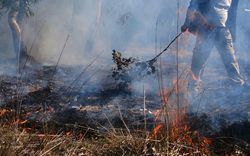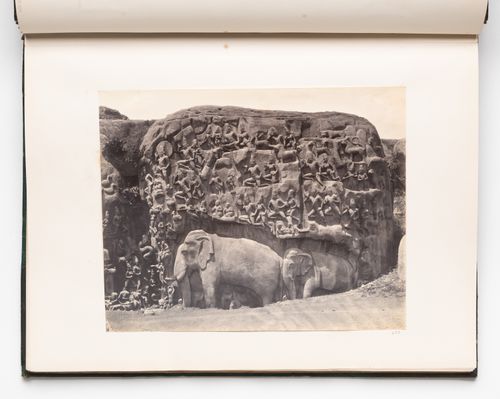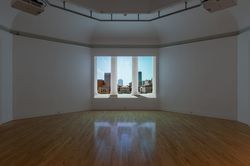articles
Counter-Narratives of Care
Figuring Territory
14 November 2022
Counter-Narratives of Care
Michaela Prunotto in dialogue with Loving Country. Photo essay by Vicky Shukuroglou
Actions:
Figuring Territory
PH1986:0107:010
architecture, sculpture
between 1867 and 1869
architecture, sculpture
articles
Oh Bungalow...
drawings
AP148.S1.1970.PR02.001.6
Description:
Appear to be storyboard drawings, with each square advancing a narrative about the planet earth.
ca. 1970-1971
Sketches, Interplanetary Architecture (Folder 6 of 7)
Actions:
AP148.S1.1970.PR02.001.6
Description:
Appear to be storyboard drawings, with each square advancing a narrative about the planet earth.
drawings
ca. 1970-1971
textual records
AP149.S1.2004.PR01.139
Description:
Contains the report "Participatory Planning Design and Development of Garden Neighbourhoods: Final Narrative Report" for the IDRC grant. Group separated in two folders.
2007
Grant report for the Making Edible Landscape project
Actions:
AP149.S1.2004.PR01.139
Description:
Contains the report "Participatory Planning Design and Development of Garden Neighbourhoods: Final Narrative Report" for the IDRC grant. Group separated in two folders.
textual records
2007
archives
Level of archival description:
Fonds
AP119
Synopsis:
The Peter Yeadon Prix de Rome project records consist of twenty ink jet printouts of computer-generated images, four sketchbooks, as well as project documentation of Yeadon's Prix de Rome project. All of the drawings were made in Rome between 1999 and 2000.
1998-2002
Peter Yeadon Prix de Rome project records
Actions:
AP119
Synopsis:
The Peter Yeadon Prix de Rome project records consist of twenty ink jet printouts of computer-generated images, four sketchbooks, as well as project documentation of Yeadon's Prix de Rome project. All of the drawings were made in Rome between 1999 and 2000.
archives
Level of archival description:
Fonds
1998-2002
Project
AP148.S1.1972.PR01
Description:
Project series documents Poli's research and design work on his major project about a peasant farmer named Zeno from Riparbella. This project, entitled "Zeno, una cultura autosufficiente," was presented at the 1978 Venice Biennale with Superstudio as "La Coscienza di Zeno (Zeno's consciousness)". The project also appears to have some overlap with another research project in which Poli and other members of Superstudio were involved: Culture materiale extraurbane. This involved research and the development of a course in the architecture programme at the University of Florence on research into traditional tools and other aspects of rural material culture. The research work on rural culture was published in the magazine Modo (no.7) in March 1978. The Zeno project reflects a major project in Poli's output, with work beginning on it in 1972 and into 1980. There are numerous narratives at work in this project. There is the narrative of Zeno's relationship to the small house built by his grandfather and in which he was born, and has always lived. Alongside this, is Poli's interest in Zeno's relationship to his tools, his clothes, all the material elements of his life in the only house he has ever known. The fictional narrative that Poli weaves into this project involves an imagined encounter between Zeno and astronaut Buzz Aldrin. Poli's fascination with Zeno's material culture extends into a comparison of these two men and their physical interactions with their worlds: both self-sufficient capsules of a kind. Material in this project includes a large number of drawings and collages depicting different domestic and working spaces and tools in Zeno's life. A number of these drawings feature artefacts, such as cloth pillowcases, metal pieces, and a rope. In addition, the project series includes a number of physical artefacts, such as tools and even Zeno's door. A notable element in this series is an artist book by Poli which features a catalogue or register of elements in Zeno's life, detailing everything about his spaces, his working days, and even the food he eats.
1972-1980
Zeno, una cultura autosufficiente [Zeno, a self-sufficient culture] (1972-1980)
Actions:
AP148.S1.1972.PR01
Description:
Project series documents Poli's research and design work on his major project about a peasant farmer named Zeno from Riparbella. This project, entitled "Zeno, una cultura autosufficiente," was presented at the 1978 Venice Biennale with Superstudio as "La Coscienza di Zeno (Zeno's consciousness)". The project also appears to have some overlap with another research project in which Poli and other members of Superstudio were involved: Culture materiale extraurbane. This involved research and the development of a course in the architecture programme at the University of Florence on research into traditional tools and other aspects of rural material culture. The research work on rural culture was published in the magazine Modo (no.7) in March 1978. The Zeno project reflects a major project in Poli's output, with work beginning on it in 1972 and into 1980. There are numerous narratives at work in this project. There is the narrative of Zeno's relationship to the small house built by his grandfather and in which he was born, and has always lived. Alongside this, is Poli's interest in Zeno's relationship to his tools, his clothes, all the material elements of his life in the only house he has ever known. The fictional narrative that Poli weaves into this project involves an imagined encounter between Zeno and astronaut Buzz Aldrin. Poli's fascination with Zeno's material culture extends into a comparison of these two men and their physical interactions with their worlds: both self-sufficient capsules of a kind. Material in this project includes a large number of drawings and collages depicting different domestic and working spaces and tools in Zeno's life. A number of these drawings feature artefacts, such as cloth pillowcases, metal pieces, and a rope. In addition, the project series includes a number of physical artefacts, such as tools and even Zeno's door. A notable element in this series is an artist book by Poli which features a catalogue or register of elements in Zeno's life, detailing everything about his spaces, his working days, and even the food he eats.
Project
1972-1980
textual records
Washington Pass Center
ARCH271707
Description:
Group consists of documentation about the design of the Rest Facility Okanogan National Forest at Washington Pass, Washington, including documents entitled "Washington Pass Design Review" and "Design Criteria for Washington Pass Scenic Overlook and Visitor Center", and an interpretative design narrative by Douglas Kelbaugh. The group also includes correspondence and sketches.
1990-1993
Washington Pass Center
Actions:
ARCH271707
Description:
Group consists of documentation about the design of the Rest Facility Okanogan National Forest at Washington Pass, Washington, including documents entitled "Washington Pass Design Review" and "Design Criteria for Washington Pass Scenic Overlook and Visitor Center", and an interpretative design narrative by Douglas Kelbaugh. The group also includes correspondence and sketches.
textual records
1990-1993
Found in Translation: Palladio – Jefferson presents recent work by the documentary and architecture photographer Filippo Romano on the villas conceived by Andrea Palladio (1508–1580) in the Veneto region and the buildings designed by the American president and architect Thomas Jefferson (1743–1826). Curated by Guido Beltramini, Palladio Museum. Co-organized with the(...)
Octagonal gallery
8 October 2014 to 15 February 2015
Found in Translation: Palladio – Jefferson
Actions:
Description:
Found in Translation: Palladio – Jefferson presents recent work by the documentary and architecture photographer Filippo Romano on the villas conceived by Andrea Palladio (1508–1580) in the Veneto region and the buildings designed by the American president and architect Thomas Jefferson (1743–1826). Curated by Guido Beltramini, Palladio Museum. Co-organized with the(...)
Octagonal gallery
Sub-series
Miscellanea
CI001.S2.D6
Description:
The portfolio 'Oeuvre de C. Rohault de Fleury', published in 1884 (DR1974:0002:029), is introduced by a succinct 'Notice Biographique', the author of which remains unknown. It provides valuable information on his family background and a narrative description of his major works (including unexecuted projects), illustrated by the accompanying unbound prints. The commentary is particulary informative concerning Charles Rohault de Fleury's work at the Muséum national d'histoire naturelle, the 1859 opera house project for the Théâtre Imperiale de l'Opera, and his innovative use of iron (reinforced) floors and roof trusses in both his public and domestic projects. Another copy of this portfolio is located in the CCA library. Album DR1974:0002:026:001-038 (1854-1858) contains drawings of architectural ornament by Charles and/or Georges Rohault de Fleury. Some of the drawing are possibly studies of ornament for Charles' architectural projects of the 1850's such as Hôtel Soltykoff, although others appear to be typical student drawings of classical architecture and ornament executed by Georges. Included are twelve drawings of architectural ornament and sculpture submitted by Georges to a newly introduced 'dessin' Prix d'emulation at the École des beaux-arts (see series CI001.S1: Architetural Education).
[ca. 1825-1884]
Miscellanea
CI001.S2.D6
Description:
The portfolio 'Oeuvre de C. Rohault de Fleury', published in 1884 (DR1974:0002:029), is introduced by a succinct 'Notice Biographique', the author of which remains unknown. It provides valuable information on his family background and a narrative description of his major works (including unexecuted projects), illustrated by the accompanying unbound prints. The commentary is particulary informative concerning Charles Rohault de Fleury's work at the Muséum national d'histoire naturelle, the 1859 opera house project for the Théâtre Imperiale de l'Opera, and his innovative use of iron (reinforced) floors and roof trusses in both his public and domestic projects. Another copy of this portfolio is located in the CCA library. Album DR1974:0002:026:001-038 (1854-1858) contains drawings of architectural ornament by Charles and/or Georges Rohault de Fleury. Some of the drawing are possibly studies of ornament for Charles' architectural projects of the 1850's such as Hôtel Soltykoff, although others appear to be typical student drawings of classical architecture and ornament executed by Georges. Included are twelve drawings of architectural ornament and sculpture submitted by Georges to a newly introduced 'dessin' Prix d'emulation at the École des beaux-arts (see series CI001.S1: Architetural Education).
File 6
[ca. 1825-1884]


